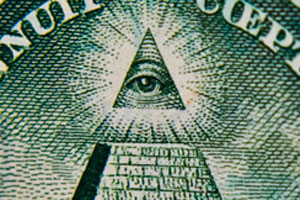
Photo of Neil Barofsky courtesy of SIGTARP
In his office’s most recent quarterly report, Neil Barofsky, the Special Inspector General for TARP, reminds readers of the overall bailout funding at risk in the Treasury’s TARP rescue so far—as much as $2.9 trillion, a staggering, unimaginable sum. But the SIGTARP’s report doesn’t dwell entirely on dollars and cents. Instead, Barofsky focuses on TARP’s cost to the federal government’s credibility in the eyes of the wary public.
The report, in assessing TARP’s effectiveness, begins by saying what most of us already figured—that the bailout went a long way toward stabilizing the economy. It propped up financial institutions that, for good or ill, were integral to the financial markets, and brought “the system back from the brink of collapse.” But beyond the financial markets, the report continues, many of TARP’s programs have sputtered, including its homeowner relief initiatives (read: the HAMP program), and its effort to remove the threat of ticking-time-bomb toxic assets from the books of financial institutions. In short, TARP has largely succeeded in its chief aim—to avert complete financial meltdown—but struggled elsewhere.
But how pyrrhic was that victory? For one, as the SIGTARP report points out, Wall Street is already reverting back to the over-leveraged, risky, even reckless behaviors that helped bring on the crisis—and the government is egging them on. “The firms that were ‘too big to fail’ last October are in many cases bigger still, many as a result of Government-supported and -sponsored mergers and acquisitions,” the report states. “Absent meaningful regulatory reform, TARP runs the risk of merely re-animating markets that had collapsed under the weight of reckless behavior.”
The government equally risks destroying what little trust Americans have in its abilities to run the country. In addition to Barofsky’s assertion that the Treasury and the Federal Reserve lied to the public last fall to push TARP through, this latest report criticizes the Treasury—as SIGTARP has in all of its quarterly reports—for the secrecy surrounding the bailout:
The beliefs of some, for example, that TARP funds went into a ‘black hole’; that TARP was created in secrecy to transfer wealth from taxpayers to Wall Street insiders (exacerbated by the announcement of billions of dollars of profits and record-setting bonus pools at TARP recipients while unemployment and foreclosures continue to rise); or that Treasury is just too closely aligned with the interests of Wall Street are only reinforced by Treasury’s failures of transparency.
As Barofsky has continually pointed out, the Treasury still refuses to make most TARP recipients account for how they used TARP funds, a basic element of transparency that’s been missing from Day One.
It’s hard to know what’s worse: that the financial system appears headed for yet another crisis of its own making, or that the bailout has only deepened the public’s distrust of our government. Second-guessing the decisions made by Geithner and Paulson and their staffs as the economy teetered is a fool’s errand, but you can’t help but wonder if Wall Street and the economy couldn’t have been saved without destroying the public’s faith in Washington. That’s damage that could prove irreparable.














